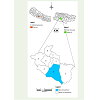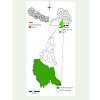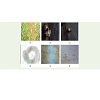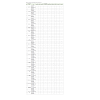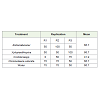Research Article
Termitomyces: New to the Science
Hari Prasad Aryal1*, Suresh Kumar Ghimire2 and Usha Budhathoki2
1Bhairahawa Multiple Campus, Siddarthanagar, Institute of Science and Technology, Tribhuvan University, Nepal
2Central Department of Botany, Tribhuvan University, Kirtipur, Kathmandu, Nepal
Corresponding author: Hari Prasad Aryal, Bhairahawa Multiple Campus, Siddarthanagar, Institute of Science andTechnology, Tribhuvan University, Nepal; E-mail: hahariprasadaryal06@gmail.com
Citation: Hari Prasad Aryal, Ghimire SK, Budhathoki U. Termitomyces: New to the Science. J Plant Sci Res. 2016;3(1): 148.
Copyright © 2016 Aryal HP, et al. This is an open access article distributed under the Creative Commons Attribution License, which permits unrestricted use, distribution, and reproduction in any medium, provided the original work is properly cited.
Journal of Plant Science & Research | ISSN: 2349-2805 | Volume: 3, Issue: 1
Submission: 13/05/2016; Accepted: 06/06/2016; Published: 10/06/2016
Abstract
Termitomyces palpensis Aryal and T. arghakhanchensis Aryal, collected within an altitudinal range of 800-1500 m a.s.l in subtropical deciduous forest during 2010-2012 is described and illustrated. Its macro- and microscopic features delimit this taxon as a new species in science.
Keywords: Agaricales; Arghakhanchi; Palpa; Siwalik; Symbiosis; Taxonomy.
Introduction
The genus Termitomyces is represented by 30 species world over [1]. Regarding the Termitomyces mushrooms in Nepal, there are the records of two species from (Banepa) Central Nepal, T. eurrhizus at 1200 m a.s.l. [2], from Kathmandu valley at 1350 m a.s.l. [3], from Shaktikhor-Chitwan at 300 m a.s.l. [4], from Twanrakhola-Makawanpur at 500 m a.s.l. [5] and T. clypeatus from Kathmanduvalley at 1350 m a.s.l. [6]; 1500 m a.s.l. [7]; and from Dolpa hill at 2954 m a.s.l. [8] and 12 species are taxonomically described [9-12] and 15species of Termitomyces are listed during on ethno mycological study[13].
Termitophilous fungi are a monophyletic group of tropical gilledmushrooms belonging to the genus Termitomyces. They are uniquefungi that grow in close and intimate association with termites fora group of termitophilous agarics. It comprises fungi that live in anobligate symbiosis with termites of the subfamily Macrotermitinae [14].
Several samples of a Termitomyces species, growing ontermatorium of the vegetation, dominated by members of theDipterocarpaceae, Combretaceae and Leguminosae were collected.Collections have been made in –pre, -during and –post monsoon,possibly as a result of its subtropical affinities, when most agarics grow in the study area. The species are characterized by typical agaricoid carpophores pluteoid, entire and incurved margin, usually fleshy, large often sharply, differentiated umbo, stipe central, spore print brownish to pinkish, lamellae free to adnexed but with decurrenttooth, crowded, white to pink in colour. Their stipe has cylindrical,solid, fibrous and smooth with pseudorrhiza. It has cylindrical andwidening at certain depth, than narrowing down to the point ofattachment to the termite nest, its length determined by the depthof the termite comb and with simple veil, hyphae, inamyloids, witha hilum of the open pore type, ellipsoid, smooth, basidia normal,cystidia present, tramal hyphae inamyloids, with or without clampconnection, trame system monomitic, presence of thin walledpyriform cheilocystidia and hymenophoral trama hyaline.
Materials and Methods
Basidiocarps from the study area (Palpa & Arghakhanchidistrict of Masyam & Thada VDC) (Figure 1 and 2), the collection wasentirely based on their sexual reproductive structures [15]. The habitand habitat including ecological parameters were recorded by theaccessory equipment.
The collections were examined from fresh material of bothmacro- and microscopically with a compound microscope (OlympusCX 22). The specimens were mounted in 5% KOH, 0.01% cotton blueand lactophenol [1]. Amyloidity of spores was observed by using Melzer’s reagent [16]. The measurements were taken with the help ofocular micrometer (1div. =11.66μm under 100x, 3.75μm under 400xand 1.66μm under 1000x). At least 20 spores were measured fromlamellae. Selected microscopic photograph was taken by Sony DSC-S980 mounted on the microscope.
The voucher specimens were identified using publication of[117-20] and on line data base [21-24]. Herbarium specimens were rehydrated in 3% KOH and have been deposited at the Natural History museum (NHM), Swayambhu, Tribhuvan University, Nepal.
Results and Discussion
Termitomyces palpensis Aryal
Local name: Bhalu mugan (Magar)
Taxonomic position: Division: Basidiomycota class:Agarocomycetes sub-class: Agaricomycetidae order: Agaricalesfamily: Tricholomataceae [25].
Identifying characters: The most distinguishing characters ofthis species are fleshy agaric with greyish brown cap, umbonate, whitegills and bulbous base of stipe with pseudorrhiza. The basidiocarpsscattered to gregarious on termite mounds or on soil, rare, odourpleasant, taste excellent, edible. Generally found in high altitude(800-1500 m a.s.l.) in late to post monsoon on termatorium of thevegetation, dominated by member of the, Combretaceae.
Etymology: The species name relates to the district (Palpa) of the type locality from where the species was collected.
Description
Sporophores: Usually growing solitary in termite hills,characterized by its obligate symbiont with termites; usually centrallystipitate white but olivaceous near the umbonal region (Figure 3).
Figure 3: Termitomyces palpensis sp. nov., a) Termite in termire nest, b) Basidiocarp dorsal view, c) Basidiocarp ventral view, d) Umbonate papilla, e) Spore print,f) Lamellae difference (1div=11.66 μm), g) Spores (1div=11.66 μm) and h) Basidium with spores (1div=3.75 μm).
Pileus: Size 9-15 cm, (Medium size), greyish brown pale towardthe margin and olivaceous near the umbonal region, umbonate,incurved margin, surface smooth, radially striate, Perforatoriumumbo and brown in colour. Lamellae: Free, white, dense. Stipe: Size10 × 2 cm, solid, swollen at base i.e. bulbous base, whitish to paleyellow in colour, surface smooth, fibrillose, absence of annulus.Pseudorrhiza: Size 5 × 0.5 cm, buffy brown in colour, solid,cylindrical. Pseudorrhiza: 5 × 0.5 cm long, solid, brown in colour,cylindrical, surface glabrous, smooth, widening at certain depth, thennarrowing down to the point of attachment to the termite nest, itslength determined by the depth of the termite comb. Flesh: Grey,soft, inflated, clamp connection absent, nonamyloid. Spore Print:pinkish. Basidia: 17.5 × 6.5 μm. Basidiospores: 4.5 × 3.5 μm, oblong.Cystidia: 25 × 15 μm. Hymenophoral trama: regular
Habitat: On termite nests in subtropical hill forest. Fruitingseason: August-October.
Phenolphthalein : Sugarcane
NH3OH : No reaction
KOH : White
FeSo4 solution : No reaction
FeSo4 crystal : Stipe: outer: White, and inner: Sunrise, Cap: White, Gills: Sugarcane.
Iodine : Dorsal: white, Ventral: Beacon.
Specimen examined: Growing on termite nest, common. Palpa(Masyam), 816 m a.s.l., long. 83.50969°E, lat. 27.76451° N, Aspect:270° W, Slop: 50° S/W, Temp.: 21.9-26.8°C, Humidity: 79-87 %, SoilpH: 6.2 Time: 9:43 am, Date: 04.08.2010, Collected by Aryal, H.P.,VN-1008184-CDBP, Accession No. NHM TU 2-2-1680. Propose fornew to Science.
Edibility: They are edible and its syrup is used for the remedy of jaundice, diarrhoea.
Distribution: Ranging 800-1500 m a.s.l. in Nepal.
Termitomyces arghakhanchensis Aryal.
Local name: Tuse cyau (Khash)
Taxonomic position: Division: Basidiomycota class:Agaricomycetes sub-class: Agaricomycetidae order: Agaricalesfamily: Tricholomataceae [25].
Identifying characters: The most distinguishing characters ofthis species are medium size cap, (usually at least ≥ 8 cm in diameter),dark-grey to rusty brown in colour, cap bullate-umbonate in shape,entire in margin, surface wrinkles, smooth, without velar remnantor with few minute whitish evanescent membranous squamules,prominent, cone-like pointed, dark-brown coloured projection atthe centre of the cap. Perforatorium are broadly conical. Stipe, arepresence of annulus with pseudorrhiza originating from termitenest; no sclerotium. Pseudorrhiza are pale, not entirely blackish.The basidiocarps are rare, odour pleasant, taste excellent, edible.Generally found in high altitude (800-1500 m a.s.l.) in late to postmonsoon on termatorium of the vegetation, dominated by memberof the, Combretaceae.
Etymology: The species name relates to the district (Arghakhanchi)of the type locality from where the species was collected.
Description
Sporophores: Usually growing solitary in termite hills,characterized by its obligate symbiont with termites; usually centrallystipitate white but olivaceous near the umbonal region.
Pileus: Size 8-16 cm, (Medium size), dark grey to black in colour,bullate-umbonate, surface wrinkled, smooth, entire margin, papillabrown in colour. Lamellae: Free, dense, crowded, white to pale grey.Stipe: Size, 7 × 2 cm, solid, swollen at base, whitish, surface smooth,annulus thin demarcation and persistent. Pseudorrhiza: Size 7 × 0.5cm long, solid, brown in colour cylindrical, slender, surface glabrous,smooth, and widening at certain depth, then narrowing down tothe point of attachment to the termite nest, its length determinedby the depth of the termite comb. Flesh: Soft, grey, inflated, clampconnection absent, inamyloid. Spore print: light brown. Basidia: 19× 6 μm. Basidiospores: 4.5 × 3.5 μm, ovoid. Cystidia: 30 × 17 μm.Hymenophoral trama: regular (Figure 4).
Table 1: Termitomyces arghakhanchensis sp. nov., a) Basidiocarp on habitat, b) and c) Basidiocarp dorsal and ventral view, d) Spore print, e) Lamellae difference (1div=11.66 μm), and f) Spores (1div=11.66 μm)).
Habitat: On termite nests in subtropical hill forest. Fruitingseason: August-October.
Chemical test with
Phenolphthalein : Sporty Yellow
NH3OH : White
FeSo4 solution : Stipe: outer: Ting of rose, andinner: Pale Rose, Cap: Ting of Rose, Gills: Macrame.
FeSo4 crystal : Stipe: outer: Lavender Dew,and inner: In Vogue, Cap: Lavender Dew, Gills: Magnolia.
Iodine : Dorsal: white, Ventral:Bathstone.
Specimen examined: Growing on termite nest, rare.Arghakhanchi (Thada), 1261m a.s.l., Long. 83.09029° E, lati.27.86208°N, Aspect: 270° W, Slop: 20° W, Temp.: 21.9-26.7° C, Humidity: 75-87%, Soil pH: 6.2, Time: 11:46 am, Date: 19.07.2011, Collected byAryal, H.P., VN-1008227-CDBP. Accession No. NHM TU 2-2-1681,Proposed for new to Science.
Edibility: They are edible and its syrup is used for the remedy ofInappetence, Abdominal disorder, Indigestion.
Key to identification of the species of newly reportedTermitomyces R. Heim
Distribution: Ranging 800-1500 m a.s.l. in Nepal.
1a Fruit-body differentiated with short or long stipe, on soil ormound,......2
1b Fruit-body differentiated into prominent head and tail onmound,......6
2a Lower side of the cap with gills, smooth, dense, free, .....5
2b Lower side of the cap either decurrent or adnexed gilled,.....3
3a Stipe always longitudinally fibrous (when broken), fruit-bodies not so brittle ……………………………………………………… T. aurantiacus
3b Stipe central, slender, hollow, white, fleshy-fibrous, smooth,papilla umbonate,.....4
4a Lamellae (mature) white, cream, pale yellow or very pale pink, free, crowded, dense, olivaceous perforatorium, pileus umbonate, incurved margin, stipe not rooting, not bulbous, without annulus, lamellae sub free, adnexed or deeply decurrent,...... T. badius
4b Lamellae (mature) white and spores dark brown or black; stipe moderately to deeply rooting (pseudorrhizea) or originating from a hypogeous sclerotium with bulbous base, pseudorrhiza originating from termite nest; nosclerotium ……………………………………………………… T. palpensis sp. Nov. newI
5a Fruit body with pseudorrhizea (up to 5 cm long), & cap 1-4cm diam., papilla conic T. microcarpus f. santalensis
5b Fruit-body small with pseudorrhiza; cap medium, approx 10cm diameter, dark brown, perforatorium, bullate-umbonateannulus present,.... T. akhanchensis sp. Nov. newII
6a Pileus medium, 5-10 cm diameters, brownish orange,concentrically scrobiculate, umbo obtuse T. fuliginosus
6b Pileus expanding to applanato-umbonate, perforatoriumprominent and pointed, spiniform papilla, veil absent, stipesolid, pleurocystidia smooth,.....7
7a Cap brownish or dark brown, 9-25 cm, perforatoriumcylindric, smooth,.....8
7b Cap brownish, tomentose; perforatorium cylindric, dark brown; annulus persitent,.... T. letestui
8a Cap without velar remnants or with few minute whitishevanescent membranous squamules,....9
8b Cap white, with large dark squamules; perforatoriumabsent,.... T. schimperi
9a Cap medium, without papilla and annulus, ochraceousbrown,... T. robustus
9b Cap smaller, globose, perforatorium low, small and poorlydeveloped, stipe usually without annulus, greyish brown ………………………………………………………T. globules
On the basis of macro- and micro-morphometric charactersthese species are closer to the T. aurantiacus, T. microcarpus f.santalensis. T. badius, T. globulus, T. schimperi, T. fuliginosus and T.le-testui but they are distinct to rest of other identified Termitomycesspecies recorded till now (Table 1). Taxonomic description of surveyof literature [7,9-12-26-39] revealed that these species are newlyproposed to the macro fungal flora of the world. Although fordetermining the species, macro and micro-morphological charactersprovides ample information. But it is not sufficient at all, so that it is necessary to ascertaining the molecular level of study for determiningthe more similar species in the systematics.
Acknowledgements
We are indebted to Central Department of Botany, TribhuvanUniversity for providing the laboratory facilities. The researchwas financed by the co-ordination division, office of the Rector,Tribhuvan University, Nepal, through the grant of Ph.D. scholar. Oneof the authors (Mr. Hari Prasad Aryal) acknowledges the Institute ofScience and Technology for granting my study leave. The authors arethankful to Research Solution, Nepal, for kind cooperation.
References
- Kirk PM, Cannon PF, Minter DW, Stalpers JA (2008) Dictionary of the fungi 10th ed. CAB International, Wallingford, UK.
- Singh SC, Shrestha R (1986) Two new records of fungi for Nepal. Him Res Dev (India) 5: 71-72.
- Joshi K, Joshi AR (2008) Ethnobotanical study on some lower plants of the central development Region, Nepal. Ethnobotanical Leaflets 12: 832-840.
- Rijal A (2011) Surveving on Knowledge: Ethnobatany of Chepang Community from mid hill of Nepal. Ethnobotany Research and Applications 9: 181-215.
- Uprety Y, Poudel RC, Shrestha KK, Rajbhandary S, Tiwari NN, et al. (2012) Diversity of use and local knowledge of wild edible plant resources in Nepal. J Ethno bio Ethno med 8: 16.
- Adhikari MK, Devkota S, Tiwari RD (2005) Ethnomycological knowledge on uses of wild mushrooms in western and central Nepal. Our nature 3: 13-19.
- Pandey N (2008) Mushroom Diversity in central Nepal: An ethno mycological Approach. Ph. D. Thesis Submitted to the Central Department of Botany, Tribhuvan University, Nepal. 255 pp.
- Devkota S (2008) Distribution and Status of Highland Mushrooms: A Study from Dolpa, Nepal. J Nat Hist Mus 23: 51-59.
- Aryal HP, Budhathoki U (2013) Termitomyces albuminosus (Berk.) Heim a New Fungal Record from Arghakhnchi, Nepal. OAKS 9: 44-47.
- Aryal HP, Budhathoki U, Tiwari RD (2014) Termitomyces microcarpus (Berk. & broome) R. Heim: A New records from Nepal. J Mycol Pl Pathol 44: 13-18.
- Aryal HP, Budhathoki U (2015a) New Record of Termite Mushrooms from Nepal. J Mycol Pl Pathol 45: 182-188.
- Aryal HP, Budhathoki U (2015b) Systematics of Nepalese Termitomyces. Our Nature 13: 31-44.
- Aryal HP, Budhathoki U (2014) Ethnomycology of Termitomyces spp. R. Heim for its medicinal importance in Nepal. An International Journal of Medicinal Plants. New Delhi, India. 6: 128-137.
- Heim R (1942) Novelles etudes descriptives sur les agaris termitophiles d’ Afrique tropicale. Arch Mus natl Hist Nat Ser 6: 1-60.
- Atri NS, Kaur A, Kaur H (2005a) Wild mushrooms collection and identification. Frontiers in Mushroom Biotechnology (Eds.: Rai, R.D., Upadhyay, R.C. and Sharma, S.R.) @ NRMC Solan.
- Melzer MV (1924) L’ornementation des spores de Russeles. Bul Soc Myc Fr 40: 78-81.
- Heim R (1977) Termites et Champignons. Les termitophiles d’Afrique Noire at d’asie Meridionale. Paris, France: Societe Novelle des Edition. 205 pp. Boubee, Paris.
- Bels PJ, Pataragetvit S (1982) Edible mushroom in Thailand cultivated by termites. In Chang, S.T. and Quimo, T.H. ed. Tropical Mushroom: Biological Nature and cultivation Methods. The Chinese University Press. Hong Kong, pp. 445-462.
- Singer R (1986) The Agaricales in modern taxonomy (4th edition), Bishen Singh Mahendra Pal Singh, Dehradun (India). 981 pp.
- Harkonen M, Niemela T, Mwasumbi L (2003) Tanzanian Mushrooms. Edible, harmful and other fungi. Botanical Museum Finnish Museum of Natural History, 200 pp.
- Biodiversity Library.org
- Index Fungorum
- Mycobank.org
- Tropicos.org
- Kuo M (2003) Mushroom taxonomy The big picture. Retrieved from the Mushroom Expert.com
- Natarajan NK (1979) South Indian Agaricales v: Termitomyces heimii. Mycologia 71: 853-855.
- Rawla GS, Arya S, Sarwal BM (1983) Species of Termitomyces Heim. From Chandigarh. India. Bibliotheca Mycologica. 91 J Cramer 13-21.
- Leelavathy KM, Flower SL, Suja CP (1985) The genus Termitomyces in India. Indian Mush Sci 2: 402-407.
- Morris B (1986) Notes on the genus Termitomyces Heim in Malawi. Society of Malawi Journal 39: 40-49.
- Piearce GD (1987) The genus Termitomyces in Zambia. Mycologist 1: 111-116.
- Vander WGCA, Eicker A (1990) Species of Termitomyces in South Africa. Mycological Res 94: 923-937.
- Bother WJ, Eicker A (1991) Cultural studies on the genus Termitomyces in South Africa. 1. Macro- and microscopic characters of Basidiome contexst cultures. Mycologia Res 95: 435-443.
- Zang M (1992) Contribution to the study on the genus Sinotermitomyces from Asia. Mycotaxon 44: 21-26.
- Adhikari MK (2000) Mushrooms of Nepal. (Eds.: Durrieu, G.). P.U. Printers, Battishputali, Kathmandu, Nepal. 236 pp.
- Adhikari MK (2014) Mushrooms of Nepal. (2nd Eds.: Durrieu, G. & H.V.T. Cotter). SP printers, Jawalakhel, Lalitpur, Nepal. 340 pp.
- Adhikari MK (2014) Mushrooms of Nepal. (2nd Eds.: Durrieu, G. & H.V.T. Cotter). SP printers, Jawalakhel, Lalitpur, Nepal. 340 pp.
- Atri NS, Kaur A, Kour H (2005b) Systematics and sociobiology of Termitophilous mushrooms from Punjab. The fungi-Diversity and Conservation in India, pp. 159-182. (Eds.: Prof. J.S. Dargan, Dr. N.S. Atri & Dr. G.S. Dhingra) Published by Bishen Singh Mahindra Pal Singh, Dehra Dun, UA (India).
- Tang BH, Wei TL, Yao YJ (2006) Revision of Termitomyces species originally described from China. Mycotaxon 95: 285-293.
- Tie ZW, Tang BH, Yao YJ, Pegler DN (2006) A revision of Sinotermitomyces, a synonym of Termitomyces (Agaricales). Fungal Diversity 21: 225-237.

